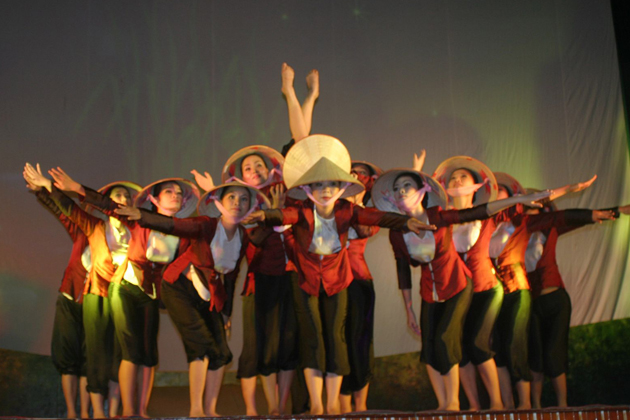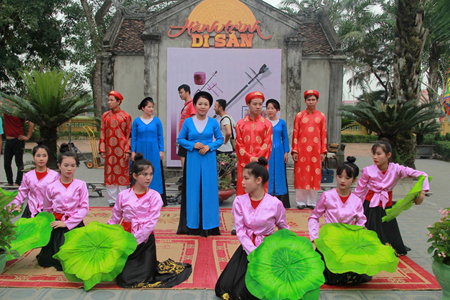Vi and Giam folk songs of Nghe Tinh play an essential role in the spiritual life of people in Nghe An and Ha Tinh provinces. Derived from Vi singing and Giam singing – two Nghe Tinh folk forms, it are sung in daily life of local people when singing lullaby to children, planting rice in the fields, rowing boats or making conical hats, etc.

Vi songs’ name are given based on different performing situations such as “weaving Vi”, “conical hat making Vi”, etc with 3 styles of non-alternating, alternating and organized group singing. As for Giam, it follows 2 styles which are recitative and alternating boy and gild call-and-response songs. In addition, Giam songs are also known as “lullaby Giam”, “narrative Giam” and “advice Giam”, etc.
Special dialect and linguistics idioms of Nghe Tinh region are applied to compose Vi and Giam lyrics that include a pair of 6 and 8 syllable lines and variants of 6 and 8 syllable lines for Vi and 5 syllable line for Giam. The songs are sung separately but alternately with typical voice of Nghe Tinh people.

Vi and Giam folk songs are very familiar with local people in these regions because it always has a strong attachment to their daily life. Through each melodies, lyrics and contents, inner feelings, emotions and spirits of Nghe Tinh people are reflected simply and vividly. In addition, Vi and Giam folk songs is an activity that enhance the relationship and solidarity of a community which can be sung by people at any age, occupation and religion.
Nowadays, Vi and Giam folk songs are performed commonly in Nghe An and Ha Tinh provinces with 75 Vi and Giam folk song groups including 1,500 members in 260 villages.
On 27 November 2014, UNESCO officially recognized Vi and Giam folk songs as a Intangible Cultural Heritage of Humanity in Paris (France) for its unique and distinctive cultural values.


